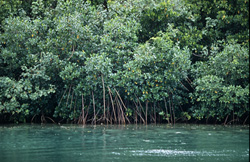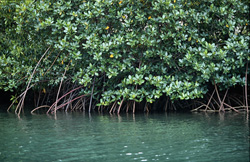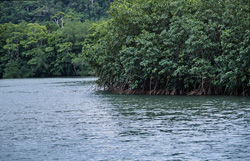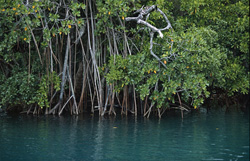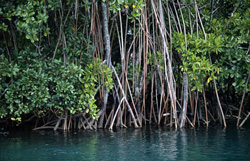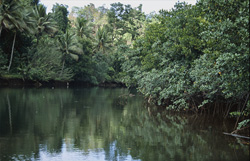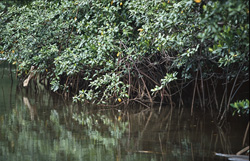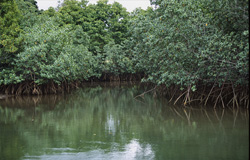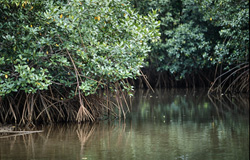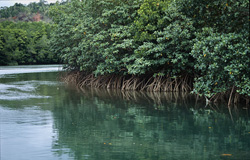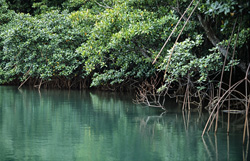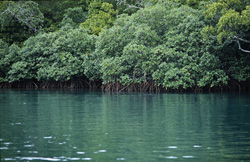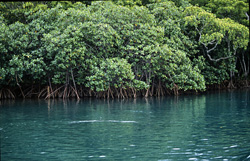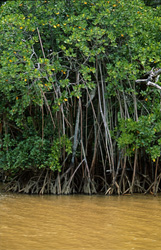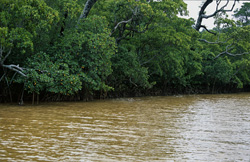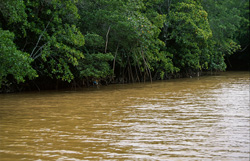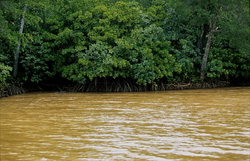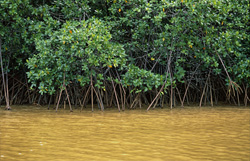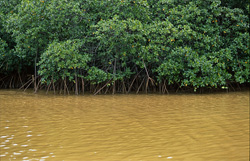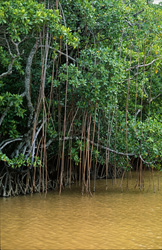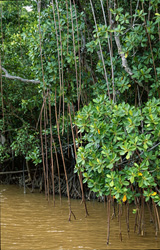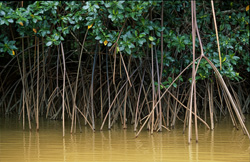Explore the Diverse Ecosystems of Mangrove Forests Along the Coastlines
The **mangroves** along the Qara-ni-Qio River in **Fiji** represent a unique **ecosystem** characterized by their adaptability to the saline and fluctuating coastal conditions. These **mangrove forests** are home to trees reaching **up to 30 meters** and provide diverse habitats for numerous **invertebrates** and **reef fish**. Through their dense **stilt roots**, they stabilize the coastline, prevent erosion, and simultaneously create protected areas for the nursery of young **marine life**. The **mangroves** act as significant **nutrient reservoirs**, absorbing and transferring nutrients from both land and sea, thereby making a substantial contribution to the **biodiversity** of the region. Additionally, they offer protection against extreme **tidal currents**, which promote the deposition of **mud** and **silt**, thereby enhancing water quality. These forests are also important **carbon sinks**, contributing to **climate regulation** by storing large amounts of CO₂. Unfortunately, **mangroves** are globally under severe threat, with estimates suggesting that already **50 percent** of the original forests have been lost. The threats include **coastal development**, **pollution**, and **climate change**, all of which impair the resilience of these vital ecosystems. Therefore, the protection and restoration of **mangroves** are crucial for maintaining the **cultural** and **ecological** integrity of coastal regions. Through targeted **sustainability measures** and **environmental management**, the future of mangrove forests can be secured, preserving their diverse ecological functions.

